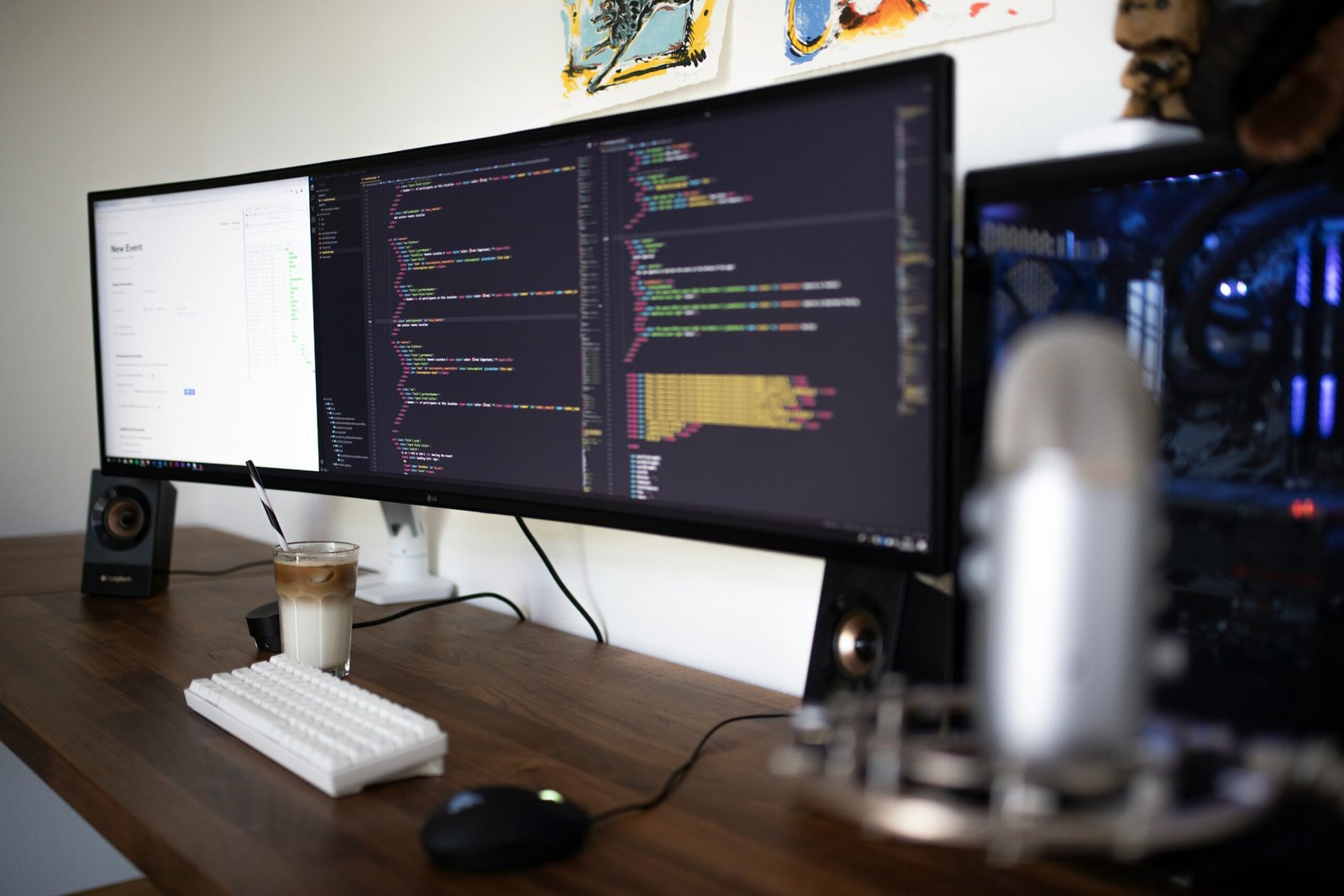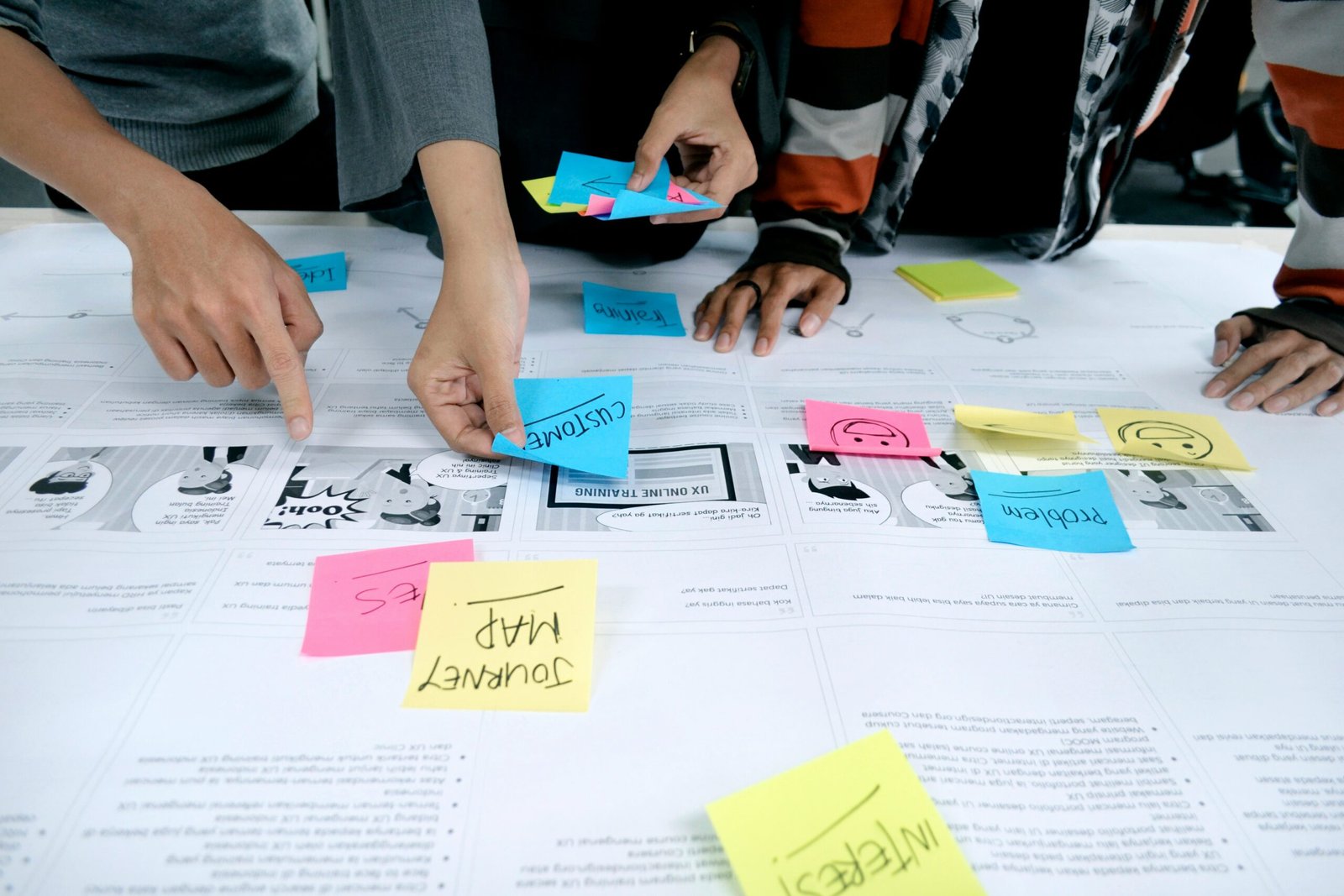
Photo by <a href="https://unsplash.com/@cgower" rel="nofollow">Christopher Gower</a> on <a href="https://unsplash.com/?utm_source=hostinger&utm_medium=referral" rel="nofollow">Unsplash</a>
Predictive analytics, powered by artificial intelligence, is significantly transforming the software development landscape. By employing AI-driven predictive analytics tools, developers are now equipped to foresee potential issues before they occur, substantially reducing the incidence of bugs and enhancing the overall quality of software products. These tools analyze vast amounts of data from previous projects and current development processes, identifying patterns and anomalies that could indicate future problems.
One of the primary benefits of predictive analytics in software development is its ability to forecast project timelines with remarkable accuracy. AI algorithms can predict the duration of various development phases, allowing project managers to create more realistic schedules. Additionally, these tools assist in resource allocation by analyzing team performance data and workload capacity, ensuring that resources are optimally utilized across the project lifecycle.
Moreover, predictive analytics tools are instrumental in risk management. By evaluating historical data and current project variables, these tools can predict potential risks and their impact on the project. This proactive approach enables teams to mitigate risks before they escalate, thereby minimizing disruptions and ensuring smoother project execution.
Several companies have successfully integrated predictive analytics into their software development processes, demonstrating its tangible benefits. For instance, a leading tech firm utilized AI-powered predictive analytics to reduce their bug rate by 30%, significantly enhancing their product quality. Another company implemented these tools to optimize their project timelines, leading to a 20% improvement in on-time project delivery.
In essence, the integration of predictive analytics in software development is revolutionizing the industry. By leveraging AI’s capabilities, developers and project managers can anticipate and address potential issues proactively, optimize resource allocation, and manage risks more effectively. The real-world examples and case studies underscore the substantial advantages of adopting predictive analytics, making it a critical component of modern software development strategies.
Automated Coding and Personalized User Experiences Through AI
Artificial Intelligence (AI) has become a pivotal force in revolutionizing the software industry, particularly in the realms of automated coding and personalized user experiences. By leveraging AI technologies, developers are now able to streamline the coding process through AI-driven code generation and debugging tools. These advanced tools not only accelerate the development lifecycle but also significantly minimize human error. For instance, platforms like GitHub Copilot utilize machine learning algorithms to suggest code snippets and functions in real-time, effectively acting as an intelligent assistant for developers. This not only enhances productivity but also ensures higher code quality and consistency.
AI’s impact extends beyond automated coding, permeating into the domain of personalized user experiences. Machine learning algorithms scrutinize user behavior and preferences to tailor software interfaces and functionalities. This personalization is evident in various applications, including recommendation systems, personalized interfaces, and adaptive learning platforms. For example, Netflix’s recommendation engine uses AI to analyze viewing habits and suggest content that aligns with individual tastes, thereby enhancing user engagement. Similarly, adaptive learning platforms like Duolingo employ AI to customize lesson plans based on the learner’s progress and areas of difficulty, making the educational experience more effective and engaging.
The integration of AI in software development and user experience design is not just a trend but a fundamental shift in how software is conceived and utilized. AI-driven tools and algorithms are continuously evolving, offering more sophisticated and accurate solutions. As a result, developers can focus on higher-order tasks such as architectural design and strategic planning, while AI handles routine coding and debugging tasks. Concurrently, users benefit from software that is more intuitive, responsive, and aligned with their individual needs. This dual advantage underscores the transformative power of AI in the software industry, setting the stage for a future where intelligent systems are at the heart of software innovation.





